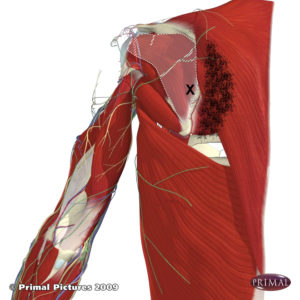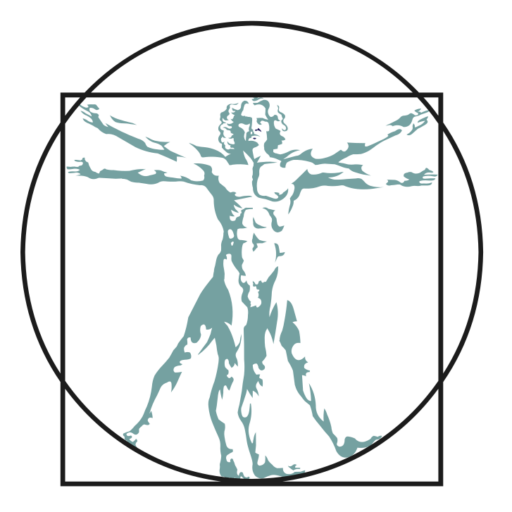You’ve heard the term “trigger point” or “knot”, but do you really know what it is? I find in my practice that many people do not have a full know-how, which is why I feel it’s important to go into detail with it here.
First and foremost, the term “myofascial trigger point” was coined by Dr. Janet Travell in 1942. If it wasn’t for her hard-work and dedication on the subject—followed by others as well (here is a brief history)—we may not have the awareness today regarding how TrP’s can cause referred musculoskeletal pain. Kudos to her and those who followed!
TrP’s are those highly sensitive areas within our muscles that hurt when touched; giving rise to specific sensations or symptoms. Technically speaking, they are hyperirritable spots in skeletal muscle that are associated with palpable nodules in taut bands of muscle fibers. At a cellular level, the individual “knot” is made up of sarcomeres that are extremely contracted, which produces heat and a local energy crisis for the tissue. Symptoms of this crisis can include referred sensations (i.e. pain, numbness, tingling, pins-and-needles, hot/cold, etc.), a local twitch response, decreased range of motion (ROM), pain on contraction against resistance, and weakness.
There are three types of TrP’s; active, latent, and satellite. How do we know which is which though? When a TrP is compressed, or pressure is applied to, certain characteristics will follow…
Active TrP’s actively refer pain locally or to another location in the body along nerve pathways. At rest, they are commonly known to radiate pain that is familiar to the original pain complaint.
Latent TrP’s may be tender when pressure is applied, but they do not cause pain at rest, and do not yet refer pain actively. They produce shortening of length and increased muscle tension.
Satellite TrP’s are active TrP’s that rely on another “key” TrP for their existence. Treating the “key” TrP will often resolve the satellite TrP by either changing it from active to latent, or get rid of it all together.
I find TrP’s to be fascinating and I wish more people were aware of them and how their referral patterns can be related to—or actually be the direct cause of—pain and dysfunction within our muscular-skeletal system. Because I have found that so many people are unaware of TrP referral patterns, I decided to include one example of more than 620 potential possibilities in human muscles. And considering so many people suffer from pain in and around the shoulder girdle, I thought I would show just one of the four TrP’s found in the Infraspinatus.
 Image copyright of Primal Pictures
Image copyright of Primal Pictures
NOTE: I personally added the TrP and referral pattern to this image. It is just an approximation. The “X” is where the actual TrP is and the black area is where it could hurt when pressed upon.
If you are interested in the image you see in this post, please visit Primal Pictures to check out their Award Winning software. I own the 3D Human Anatomy: Regional Version and it is awesome.
If you are interested in learning about TrP and their referral patterns, I highly recommend that you check out this flip-chart. I also own this and refer to it quite frequently in my practice.
In closing, the number of people that get misdiagnosed and/or undergo unnecessary, invasive, and expensive treatments and procedures for pain-relief—with less than stellar results—honestly amazes me. I’m not disregarding other medical professionals and treatment options out there by any means, just hoping that some day in the near future, certified Precision Neuromuscular Therapists will be one of the first lines of defense when it comes to pain and dysfunction caused by muscular-imbalances; TrP’s do play a huge role and that’s what we treat.
UPDATE as of 9/20/12: Here is another post with additional information related to TrP’s.
* * * * *
“Neutral balance alignment is key to becoming pain free!”™ ~ Me

[…] Therapy, Nicole Ftacnik LMT CPNMT, NMT, PNMT, Precision Neuromuscular Therapy In my last post, Trigger Points (TrP’s) In Detail, I briefly mentioned a TrP in the infraspinatus and thought I would go ahead and write about this […]
[…] pain, such as the carpal tunnel and sciatic-type symptoms I mentioned, among others. (Please read this post for more detailed information on […]
[…] Pain from trigger points […]
[…] Therapy, Nicole Ftacnik LMT CPNMT, NMT, PNMT, Precision Neuromuscular Therapy In my last post, Trigger Points (TrP’s) In Detail, I briefly mentioned a TrP in the infraspinatus and thought I would go ahead and write about this […]
[…] my opinion, treating our own TrP’s is pretty difficult; however, it can offer some short-term relief until the issue of pain and […]
[…] Therapy, therapy, trigger points, types of Back in May of this year, I posted an article titled Trigger Points (TrP’s) In Detail and thought I would take it a step further by describing additional TrP’s that I learned […]
[…] and hamstrings are a few muscles that can mimic sciatica. Trigger points (click here and here for previous posts on TrP’s—and please note that the muscles below, in bold, […]